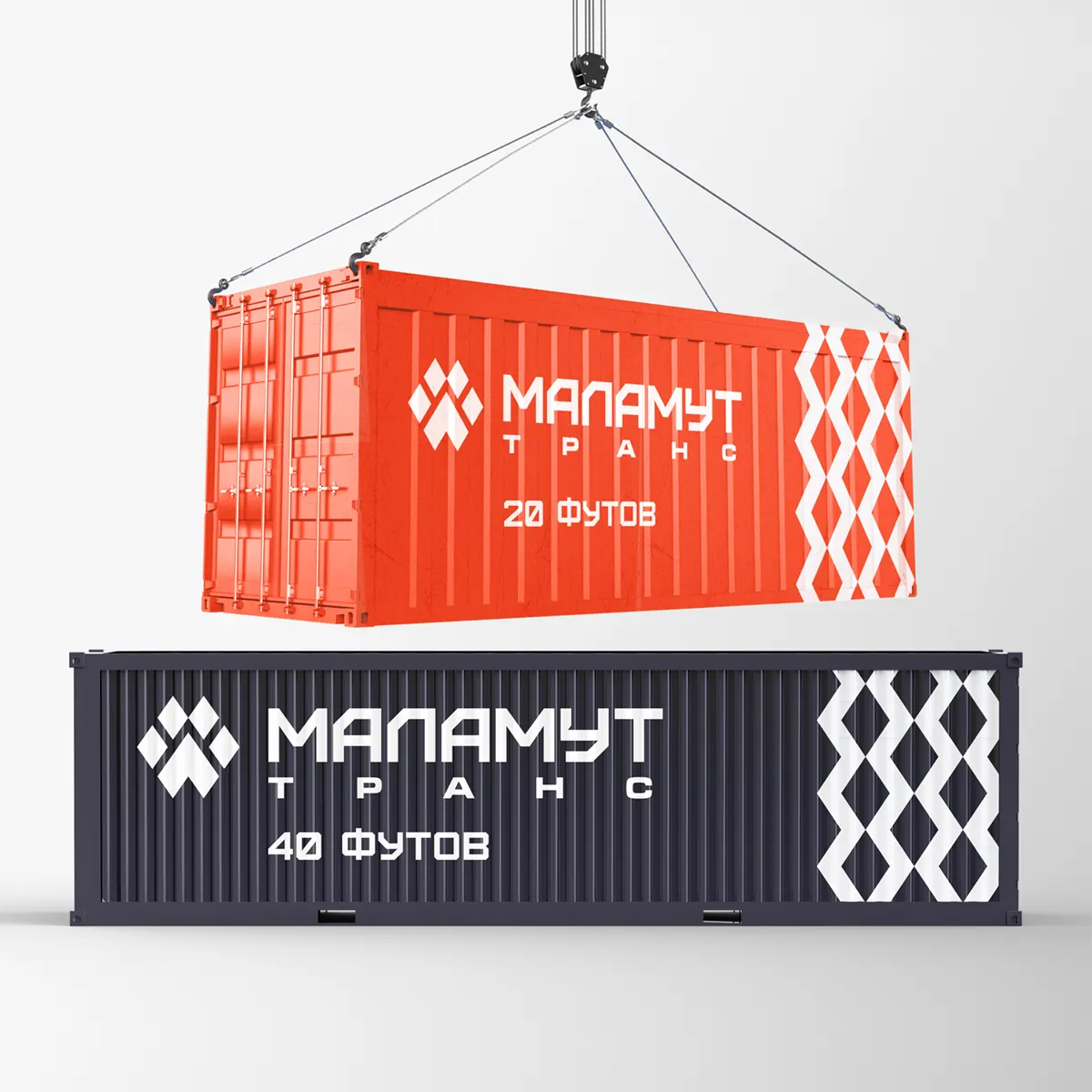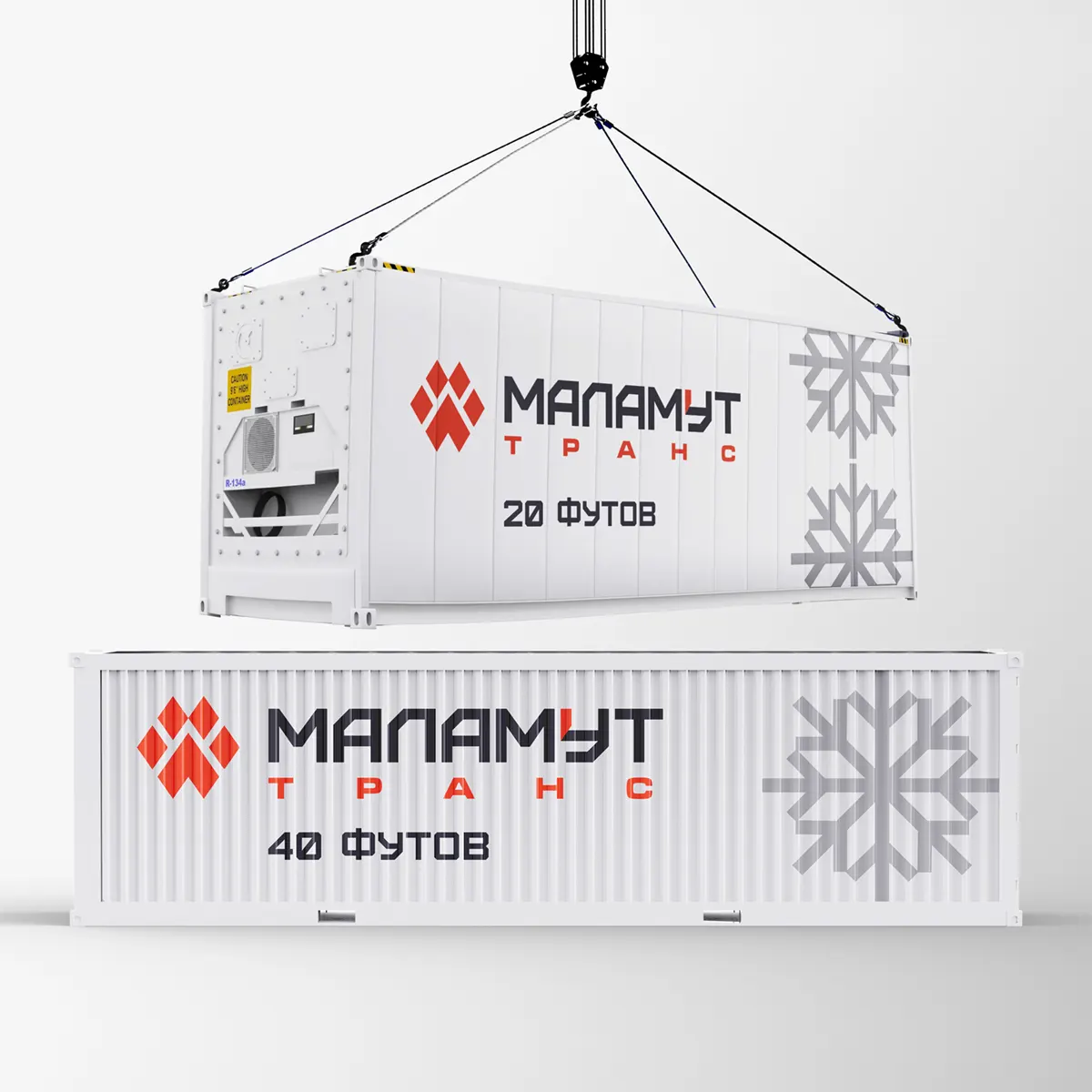Malamut Trans offers cargo transportation services using various types of containers. In this article, we describe container types, their sizes, and classifications based on key parameters.
What is a container?
A container is a standardized reusable cargo unit designed for storing and transporting various goods by sea, road, rail, and air transport. Containers provide convenience in logistics, loading and unloading operations, and reliable cargo protection.
Main types of containers
There are several types of sea containers classified by purpose and construction:
- Dry Containers (Dry Container, DC) — universal containers with a sealed metal structure intended for most cargoes that do not require temperature control.
- Refrigerated Containers (Reefer, RF) — equipped with a cooling system and used for transporting goods that require maintaining a specific temperature regime.
- Open Top Containers (Open Top, OT) — the top part is covered with a removable tarpaulin or soft cover, suitable for cargo loaded from above.
- Flat Rack Containers (Flat Rack, FR) — open platforms without side walls for oversized and heavy cargo.
- Tank Containers (Tank, TC) — tank containers for liquid and gaseous cargoes, equipped with special systems for reliable transportation.
Classification by size
Containers have standardized sizes measured in feet (1 foot ≈ 0.3048 m):
| Container Type | Length (m) | Width (m) | Height (m) | Note |
|---|---|---|---|---|
| 20-foot standard (20' DC) | 6.06 | 2.44 | 2.59 | Most common for dense and heavy cargo |
| 20-foot high cube (20' HC) | 6.06 | 2.44 | 2.89 | Height increased by 30 cm (1 foot) compared to the standard |
| 40-foot standard (40' DC) | 12.19 | 2.44 | 2.59 | Suitable for light bulky cargo |
| 40-foot high cube (40' HC, High Cube) | 12.19 | 2.44 | 2.89 | Height increased by 30 cm (1 foot) compared to the standard |
| 45-foot high cube (45' HC) | 13.72 | 2.44 | 2.89 | Used for especially bulky cargo |
The twenty-foot equivalent unit (TEU) is used to calculate cargo ships and container terminals. Other container sizes relative to TEU are calculated as: 10-foot — 0.5 TEU, 30-foot — 1.5 TEU, 40-foot — 2 TEU.
Classification by other characteristics
Besides size and construction type, containers are also classified based on the following characteristics:
- Load capacity: light-duty (up to 2.5 tons), medium-duty (2.5–10 tons), heavy-duty (over 10 tons).
- Construction: sealed or unsealed, closed or open.
- Specialization: containers with climate control, ventilation, reinforced frames, etc.
Conclusion
The choice of the correct container type depends on the type of cargo, transportation conditions, and storage requirements. Malamut Trans recommends consulting with its specialists for the optimal container solution tailored to your specific cargo and route.



